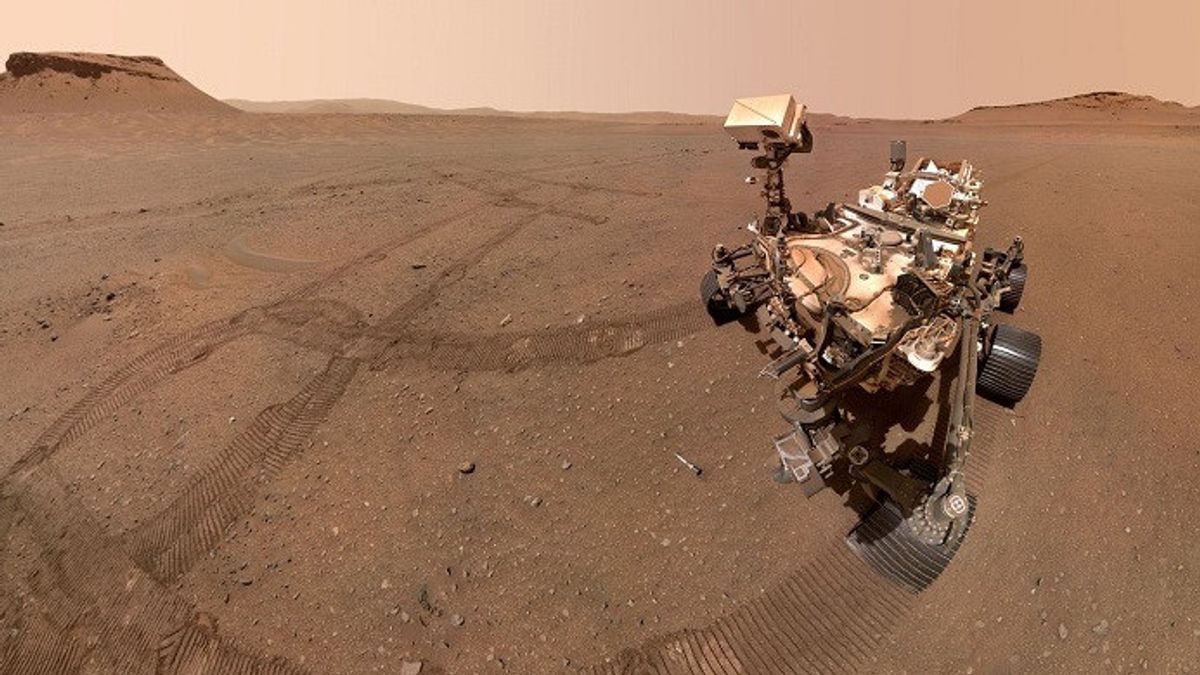JAKARTA - NASA's rover robot, Perseverance has succeeded in dropping the 10th tube which is the last sample on Planet Mars, thereby completing the first human sample depot on another world.
Perseverance began storing titanium canisters containing rock and dust samples six weeks ago, as part of its Mars Sample Return mission.
After landing on the Red Planet in February 2021, in the Jezero Crater to be precise, the rover took a pair of samples from rocks deemed scientifically important by NASA.
One sample of each pair taken so far is now in a carefully managed depot in the Three Forks region of Jezero Crater.
The sample depot will serve as a backup set while the other half remains within Perseverance, which will be the primary means of delivering samples to the Sampling Landers as part of the mission.
NASA believes the core of igneous and sedimentary rocks provides an excellent cross-section of the geological processes that took place in Jezero Crater shortly after the crater's formation nearly 4 billion years ago.
The rover also holds atmospheric samples and so-called witness tubes, which are used to determine whether the samples collected may have been contaminated with material the rover brought back from Earth.
The titanium tube is deposited on the surface in an intricate zigzag pattern, with each sample about 5 to 15 meters apart to ensure they can be safely recovered.
Adding time to the depot manufacturing process, the NASA team needed to map out exactly the location of each 7-inch-long tube and glove combination (adapter) so samples could be found even when covered in dust.
The depot sits on flat land near the base of an ancient, raised fan-shaped river delta, which was formed long ago when a river flowed into the lake there.
VOIR éGALEMENT:
“With the Three Forks depot in our rearview mirror, Perseverance is now heading for the delta. We will hike via the 'Hawksbill Gap' route we explored earlier. Once we pass through the geological unit that the science team calls 'Rocky Top,' we will be in new territory and begin to explore the Delta Top," said Perseverance deputy project manager at JPL NASA, Rick Welch.
Further quoted from NASA's official website, Wednesday, February 1, the main goal of the Perseverance mission on Mars is astrobiology, including storing samples that may contain signs of ancient microbial life.
Perseverance will characterize the planet's geology and past climates, pave the way for human exploration of the Red Planet, and be the first mission to collect and store Martian rock and regolite.
NASA's next mission, in collaboration with the European Space Agency, will send a spacecraft to Mars to collect the sealed sample from the surface and return it to Earth for in-depth analysis.
The English, Chinese, Japanese, Arabic, and French versions are automatically generated by the AI. So there may still be inaccuracies in translating, please always see Indonesian as our main language. (system supported by DigitalSiber.id)













